What are the true luxuries of New York? Surely not the over-hyped, over-priced and ultimately disappointing experiences, of which there are many. What are the real deal luxury experiences? We’ve been sharing our inside tips on how to do New York like a luxury insider. In this edition, we take a trip to The Sculpture Garden at the MoMA.
True Luxury New York: The Sculpture Garden at the MoMA
Thousands of places in New York City hold themselves out as luxuries. Restaurants, hotels, boutiques, cruises. You know the drill. But what if some of these places are faux luxury, and not the real deal? How can you discover the true luxuries of New York?
Dear reader, we’re glad you asked. Here at Dandelion Chandelier, we view it as our mission to share our insider insights on what’s real and what’s fake – what’s a must-do and what’s not worth your time or money – in the world of luxury. Starting with our own home town.
We’ve shared ideas on how to do New York like a luxury insider in the spring, in the autumn, and at the holidays. Now we’re doing a deep dive into some truly luxurious and iconic New York experiences. And the best news of all? Many of them are free.
Like the gorgeous Eden of the Sculpture Garden at the Museum of Modern Art (MoMA). Here’s our photo journey to the garden on a recent sunny spring day.
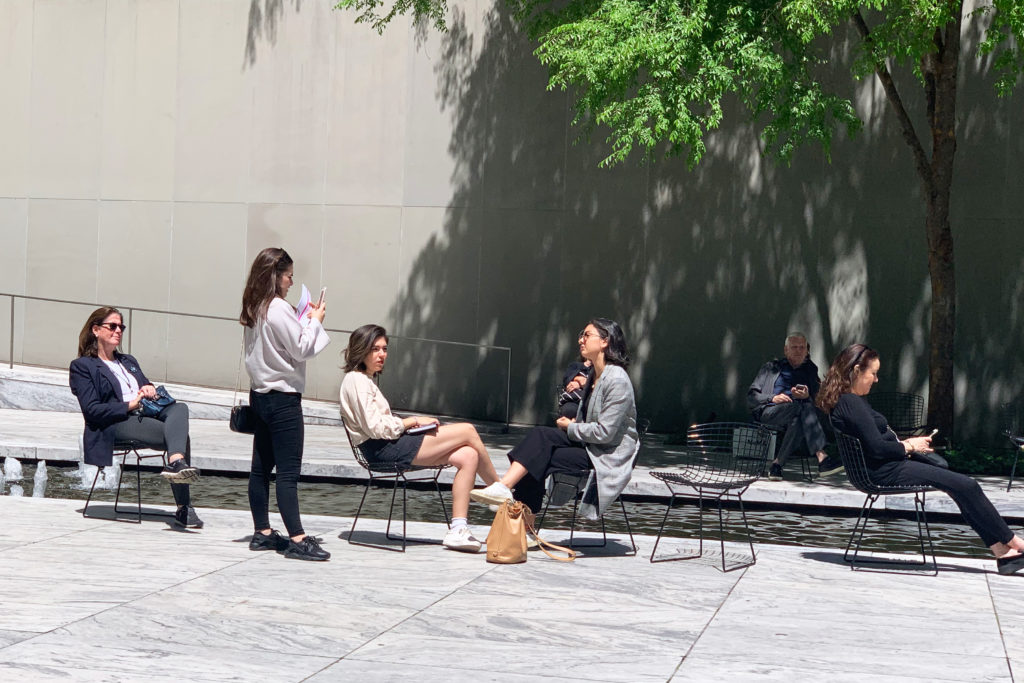
The Sculpture Garden at the MoMA. Photo Credit: Dandelion Chandelier.
where is it?
Properly known by its full name, The Abby Aldrich Rockefeller Sculpture Garden first opened to the public in 1939 at 11 West 53rd Street. The first Director of the Museum of Modern Art, Alfred Barr, and Architecture curator John McAndrew designed it in a single night. They conceived of it just a couple of weeks before the Museum’s new building opened for the first time, viewing a sculpture garden as an integral part of the institution they were establishing.

The Sculpture Garden at the MoMA. Photo Credit: Dandelion Chandelier.
The garden we see today was designed in 1953 by MoMA’s Director of Architecture and Design, Philip Johnson. That was the moment in which the space was dedicated to Abby Aldrich Rockefeller, one of the Museum’s founders. Her townhouse home once stood on the site. The garden evolved through a series of renovations over the next half-century, and will continue to do so in our own era.
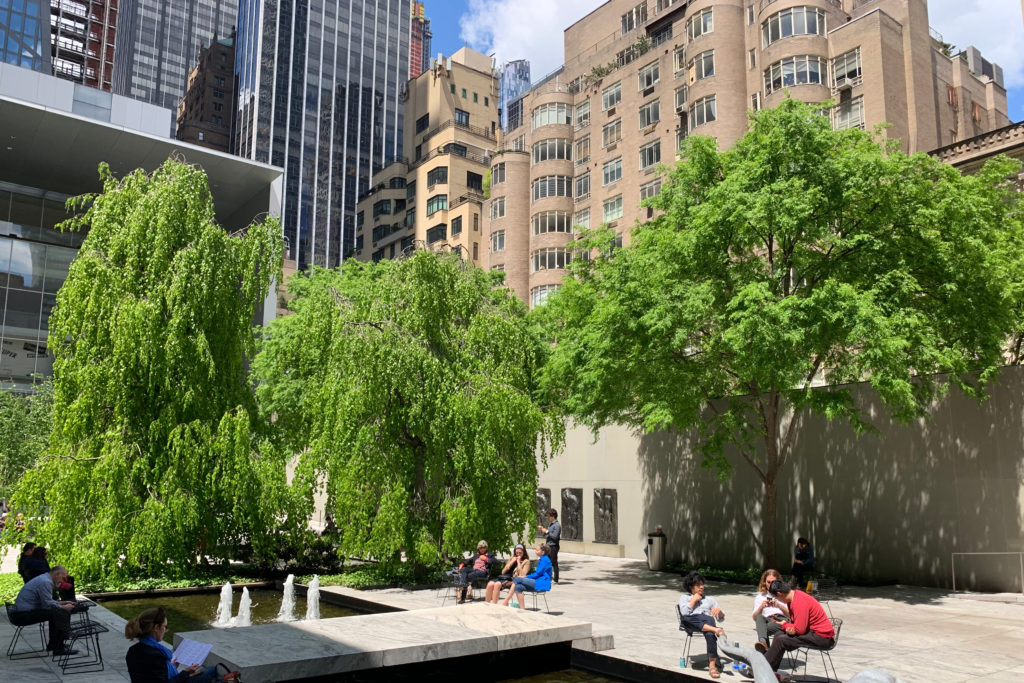
The Sculpture Garden at the MoMA. Photo Credit: Dandelion Chandelier.
Beginning on June 15, 2019 the MoMA – including the sculpture garden – will close until October 2019. The museum is expanding and renovating, and “the New MoMA” will be unveiled this fall.
So go this spring, while you can!
how do you get in?
Just enter the MoMA through the doors on West 53rd Street between Fifth and Sixth Avenues. Walk past the reception desk, take a right, and you’ll see the garden straight ahead of you.
No museum admission is required to spend time in the Sculpture Garden at the MoMA. Although of course, your voluntary donation will be highly valuable and greatly appreciated should you choose to make one.

The Sculpture Garden at the MoMA. Photo Credit: Dandelion Chandelier.
what’s in the Sculpture Garden at the MoMA?
Every time we have visited, there has been a slightly different group of sculptures on display in this garden. We remember seeing a monumental Richard Serra there many years ago. We wish we had seen last summer’s Snowman (a sculpture composed of an actual snowman encased in a glass-door freezer, by Peter Fischli and David Weiss).

Snowman (1987) Peter Fischli and David Weiss. Photo Courtesy: Matthew Marks Gallery.
Part of the joy of a visit to the Sculpture Garden at the MoMA is that it’s ephemeral, as so many luxuries are. It will never be the same place twice – so go whenever the mood strikes, and you won’t be disappointed.
Here are the works that we saw on our most recent visit.
Isa Genzken, Rose II (2007)
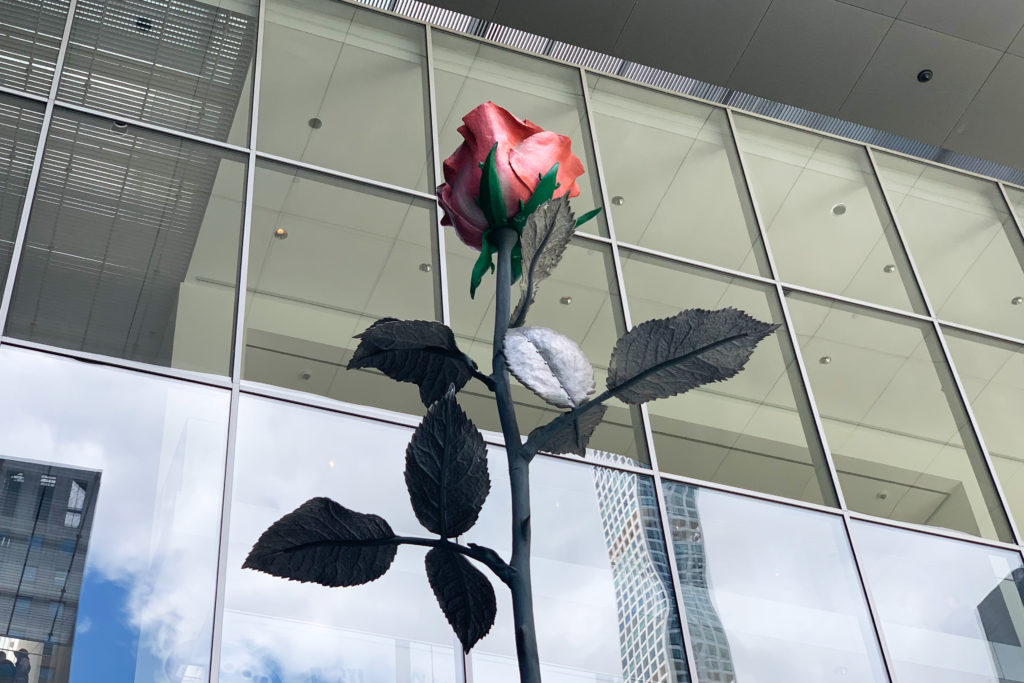
Isa Genzken, Rose II (2007). Photo Credit: Dandelion Chandelier.
Aristide Maillol, The River
This lead sculpture was begun 1938-39, and completed in 1943. The museum notes explain its origin. “Commissioned to create a monument to a notable pacifist, the French writer Henri Barbusse, Maillol conceived the sculpture as a work on the theme of war: a woman stabbed in the back, and falling. When the commission fell through, he transformed the idea and called the piece The River. Twisting and turning, her raised arms suggesting the pressure of some powerful current, this woman is the personification of moving water.”

The River by in the Sculpture Garden at the MoMA. Photo Credit: Dandelion Chandelier.
Henri Matisse, The Back (I); The Back (II); The Back (III)
Painter Henri Matisse was also a sculptor. These three works were not intended to be shown together; he created them over the course of many years. The topic intrigued him and he returned to it repeatedly. The MoMA curator notes: “these reliefs—his largest sculptures—present a coherent progress, from a relatively detailed naturalism toward a near-abstract monumentality.”

The Back (I), The Back (II) and The Back (III) by Henri Matisse in the Sculpture Garden at the MoMA. Photo Credit: Dandelion Chandelier.
Hector Guimard Entrance Gate to Paris Subway (Métropolitain) Station
The garden also includes an actual subway entrance sign from Paris, France circa 1900. The structure is considered a work of art in its own right. The museum catalog notes: “The sinuous, organic lines of Guimard’s design and the stylized, giant stalks drooping under the weight of what seem to be swollen tropical flowers, but are actually amber glass lamps, make this a quintessentially Art Nouveau piece.”

the Sculpture Garden at the MoMA. Photo Credit: Dandelion Chandelier.
In addition to these permanent works, each summer sees at least one new special installation from a contemporary artist. Sadly, this summer is the exception due to the renovations. But it will be back!
why go?
In a city filled with options – museums, Central Park, historical sites, and cultural offerings of every imaginable type – why bother spending time in this particular place?
Well, perhaps to bask in the sunlight.

The Sculpture Garden at the MoMA. Photo Credit: Dandelion Chandelier.
Or to confer in the shade.
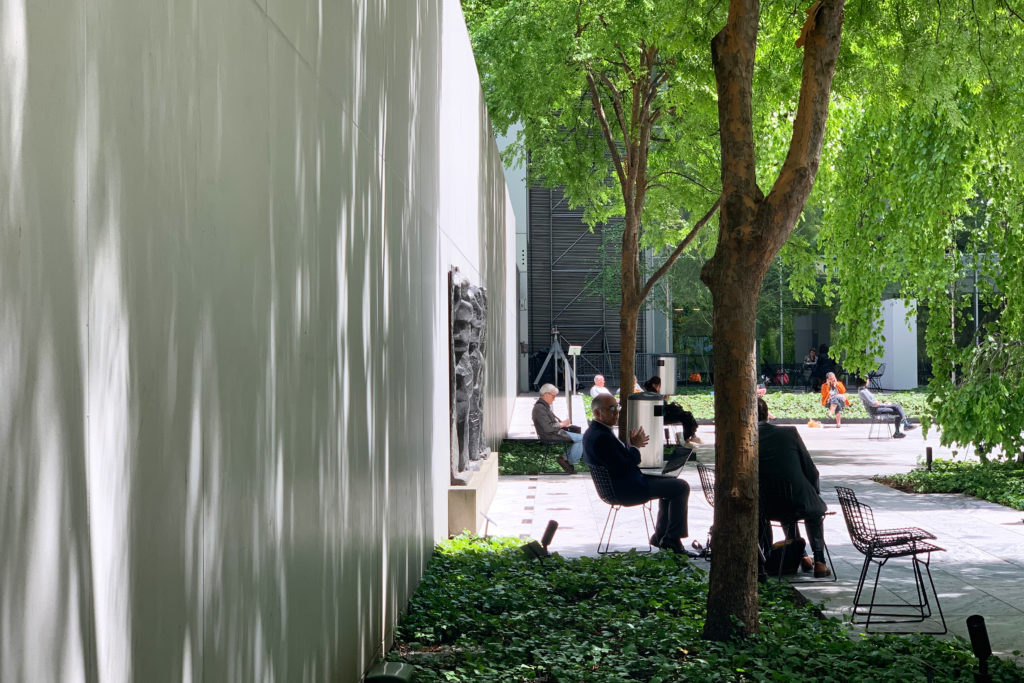
The Sculpture Garden at the MoMA. Photo Credit: Dandelion Chandelier.
As a prelude to seeing what’s inside the museum.

The Sculpture Garden at the MoMA. Photo Credit: Dandelion Chandelier.
Or a quiet place to discuss and reflect upon what you just saw.
Perhaps you should go because sometimes the sight of greenery is an absolute necessity. Especially in Gotham.

The Sculpture Garden at the MoMA. Photo Credit: Dandelion Chandelier.
Or maybe you should be there so you can just watch the New Yorkers go by (or observe them as they strike a pose).

The Sculpture Garden at the MoMA. Photo Credit: Dandelion Chandelier.
You might want to go to have a moment to yourself.

The Sculpture Garden at the MoMA. Photo Credit: Dandelion Chandelier.
Or to hang out with your friends.

The Sculpture Garden at the MoMA. Photo Credit: Dandelion Chandelier.
Personally, we go in part to pick up fashion styling ideas and inspiration. If you’re hanging around contemporary art, you should bring your A-game. And many do.
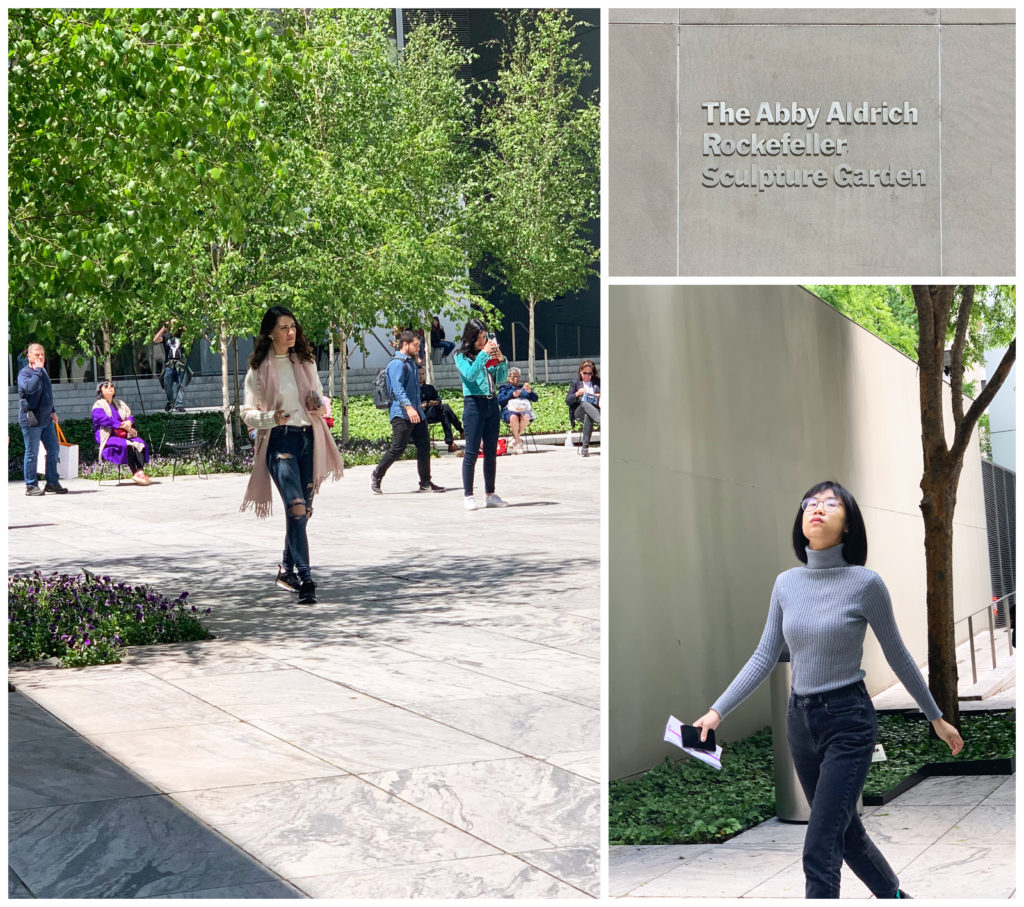
The Sculpture Garden at the MoMA. Photo Credit: Dandelion Chandelier.
Why go? Ultimately, you should go because when you leave, you’ll feel restored, calmer, happier, more in tune with your surroundings. And ready to take on the rest of the day. Whatever it may hold.
And it’s all free! What could be more luxurious than that?
see luxury in a new light
Join our community! For access to insider ideas and information on the world of luxury, sign up for our Dandelion Chandelier newsletter here. And see luxury in a new light.







